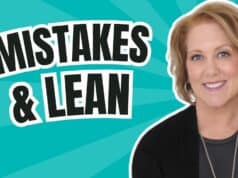By Dan Markovitz
Back in October, Lifehacker ran a lengthy article on “personal kaizen.” The thrust of the piece is how we can improve our lives by adopting the kaizen approach of the TPS and applying it to our own work habits.
It's not worth nitpicking some of the author's misunderstanding of kaizen, and the confusion with other lean principles like error-proofing or eliminating waste. While he's certainly not ready to write a scholarly treatise on lean, he does touch on something very important: that kaizen can apply to every aspect of how we work, even the small, seemingly insignificant (or ancillary) aspects of our work habits.
There's a tendency to think of kaizen as a massive, stop-the-assembly-line “event” during which we make gigantic improvements in the company's operations. And certainly there's value to the kaizen blitz. But relying upon a “blitz” for improvement often means ignoring the value that the steady accretion of small changes can bring.
The author points out, for example, how he looked at his system for handling email and improved it so that he didn't lose urgent or critical emails:
You might introduce a folder flow. You're all email wizards by now, so this is just an example. You might have an inbox and an urgent box. You set up a filter so that all email marked urgent go into the urgent box, and all others sit in the inbox. You set aside five minutes every hour, right before you refill your coffee cup, to deal with the urgent items as quickly as possible– you want that coffee, right? And twice, right before lunch and before you leave for the day, you clear out the inbox, reading and dealing with all items that weren't marked urgent. Easy and simple, with process improvements and thinking built in.
And here's another example of how he constantly fiddles with the way he stores information — phone numbers, contact names, links to websites he finds valuable — so as to improve his ability to find what he needs quickly:
A few months back, I started using GTDTiddlyWiki. It's packed with features, and I've found a number of them that I like very well– really, it's just a canvas on which you can design your own process improvements and workflows. I store lots of data there. I back it up by sending it to my Gmail account. I'm continually tearing apart my system of hyperlinks and reconfiguring them in ways that make more sense, are simpler and easier. It took some time getting used to it, but that single, free HTML document ended up being my killer app, and I would miss it terribly. Now I use it every day, and using it is unconscious. I don't have to think about what I'm going to do with a phone number or a contact name. I don't need to wonder where I wrote that little idea. All that thinking is inbuilt.
All he was trying to do was make his life just a bit easier, and without realizing it, he hit on key elements of 5S, of waste, and of standard work.
Whether or not his system would work for you is irrelevant. What's important to note is his constant fiddling with his personal work system. He's attempting to make his job a little bit simpler, so that he can do his job a little bit more easily.
Have you examined how you work recently? Do you lose time looking for information — or worse, actually lose the information itself? Do you start a task — an email, a budget review, a press release — and lose track of it behind six other windows on your computer — and then, when you rediscover it, you realize that you forgot what you were going to write? Do you wake up at 2am remembering a phone call that you didn't make?
These are symptoms of problems that you can solve, with a little bit (okay, maybe a lot) of kaizen. Look at those annoyances and ask the Five Why's. Think about how you can improve your work habits to eliminate those problems. Just like problems on a production line, all these issues are simply opportunities to improve your work process and do your job better.
In a Fast Company article on Toyota, journalist Charles Fishman noted that a typical Toyota assembly line in the United States makes thousands of operational changes in the course of a single year. He adds,
that number is not just large, it's arresting, it's mind-boggling. How much have you changed your work routine in the past decade? Toyota's line employees change the way they work dozens of times a year.
And he's right, of course. Most of us handle memos, documents, phone calls, emails, meetings, interruptions — all the forms in which information flows through us (and our office) — the same way today as we did last month, last year, and three years ago. While we've been planning our upcoming kaizen blitz in the factory (or the hospital or the insurance office), we've forgotten to look at our own work habits to see what we could improve. And that's really the essence of kaizen.
What do you think? Please scroll down (or click) to post a comment. Or please share the post with your thoughts on LinkedIn – and follow me or connect with me there.
Did you like this post? Make sure you don't miss a post or podcast — Subscribe to get notified about posts via email daily or weekly.
Check out my latest book, The Mistakes That Make Us: Cultivating a Culture of Learning and Innovation:










Jaime Flinchbaugh’s book The Hitchhiker’s Guide to Lean has a very nice chapter on Personal Lean. I recommend it to people all the time.
Sorry, it’s Jamie Flinchbaugh.
In Kaizen: the Key to Japan’s Competitive Success, Masaaki Imai defined it as: “a means of continuing improvement in personal life, home life, social life, and working life. At the workplace, Kaizen means continuing improvement involving everyone-managers and workers alike. The Kaizen business strategy involves everyone in an organization working together to make improvements without large capital investments.” Incorporating this with the GTD and Covey personal improvement and organisation methodologies could be powerful but possibly needs some thought before trying to integrate these techniques together.
Rob
Rob – I agree. You might want to see my approach towards integrating lean with personal efficiency principles: http://www.timebackmanagement.com